Winter 2000
Broadcasters: Rethinking Elections
There were some differences of opinion and some lively discussion about how television stations should cover elections but one unmistakable theme emerged from the first Best Practices 2000 workshop in Washington, DC, December 10-12: The old “horse race” kind of coverage simply isn’t going to cut it.

LEFT: Broadcasters check out “Citizen Voices”, The Philadelphia Inquirer’s election Project.
Fortunately, there were lots of alternatives and new ideas shared by participants. Best Practices 2000 (BP2K) is a project of Wisconsin Public Television in partnership with the Pew Center, the Radio and Television News Directors Foundation and the PBS Democracy Project.
December’s session was the first of at least four workshops to be held around the country to help nourish innovative election coverage. BP2K is also supporting pilot projects in 10 broadcast markets that involve partnerships between public and commercial stations to create better election coverage.
The next workshops will be day-and-a-half sessions focusing on “Coping with Candidates,” how to put them meaningfully on the air and how to monitor their political advertising and their web sites.
They will be held March 20-21 in the San Francisco area, and March 30-31 in the Boston area. For registration information, e-mail cmeyer@wpt.org.
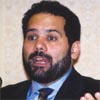
Ray Suarez, Correspondent, The NewsHour with Jim Lehrer
“Political coverage does not have to consist of running to rallies, asking candidates embarrassing questions and running back to put it on the air. We have to widen our notion of what political coverage is. If you want to engage the public, people have to have a part to play and not just as the owner of the hand that gets shaken by the politician. We should hear from them in the context of issues coverage more than we do.”
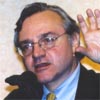
E.J. Dionne, Brookings Institution Senior Fellow, Author, Political Commentator
“I think it’s possible to be as tough as we are in the sphere of people’s personal lives and say perhaps we should turn our attention to being tough-minded about how words said on the campaign trail or in advertising relate to what people have done or might actually do.”
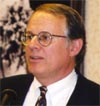
Chris Satullo, Deputy Editor, Philadelphia Inquirer
“As E.J. Dionne put it, ‘America is being trapped in a politics of false choices presented in a partisan, take-no-prisoners advocacy. It’s a politics of either/ or. Americans want a politics of both/ and.’
“In the media, we compound that problem of false choices. We depict the center as being a less genuine, less interesting place. Americans feel dissed; they say they won’t play.
In designing the Citizens Voices project in the recent mayoral race, “we said maybe we could engage at least a model cross-section of people in the city in naming the issues and framing those issues. We thought maybe we might change the conduct of the campaign.
“(In the end) people felt good about a race they were scared of.”
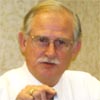
Doug Fox, Political Reporter, WFAA-TV, Dallas
“There is a huge disconnect between voters and the democratic process. How can you turn out a story every day that’s interesting and reconnects voters and the process? Put a face on the story. Humanize it. People-ize it. Go out and talk with folks.”
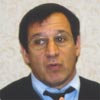
Dennis Hartig, Managing Editor, The Virginian-Pilot
“We have subordinated political drama to political utility. [We offer] information and insight over insult and intrigue, usefulness over political drama.”
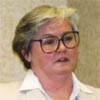
Mary Martin, CBS Campaign 2000
” It’s a privilege to be doing this now. We don’t feel constrained by the way it’s been done in the past. We can do it any way at all. It’s a great adventure and I hope we all succeed brilliantly because it will be the best thing for this little democracy of ours.”
